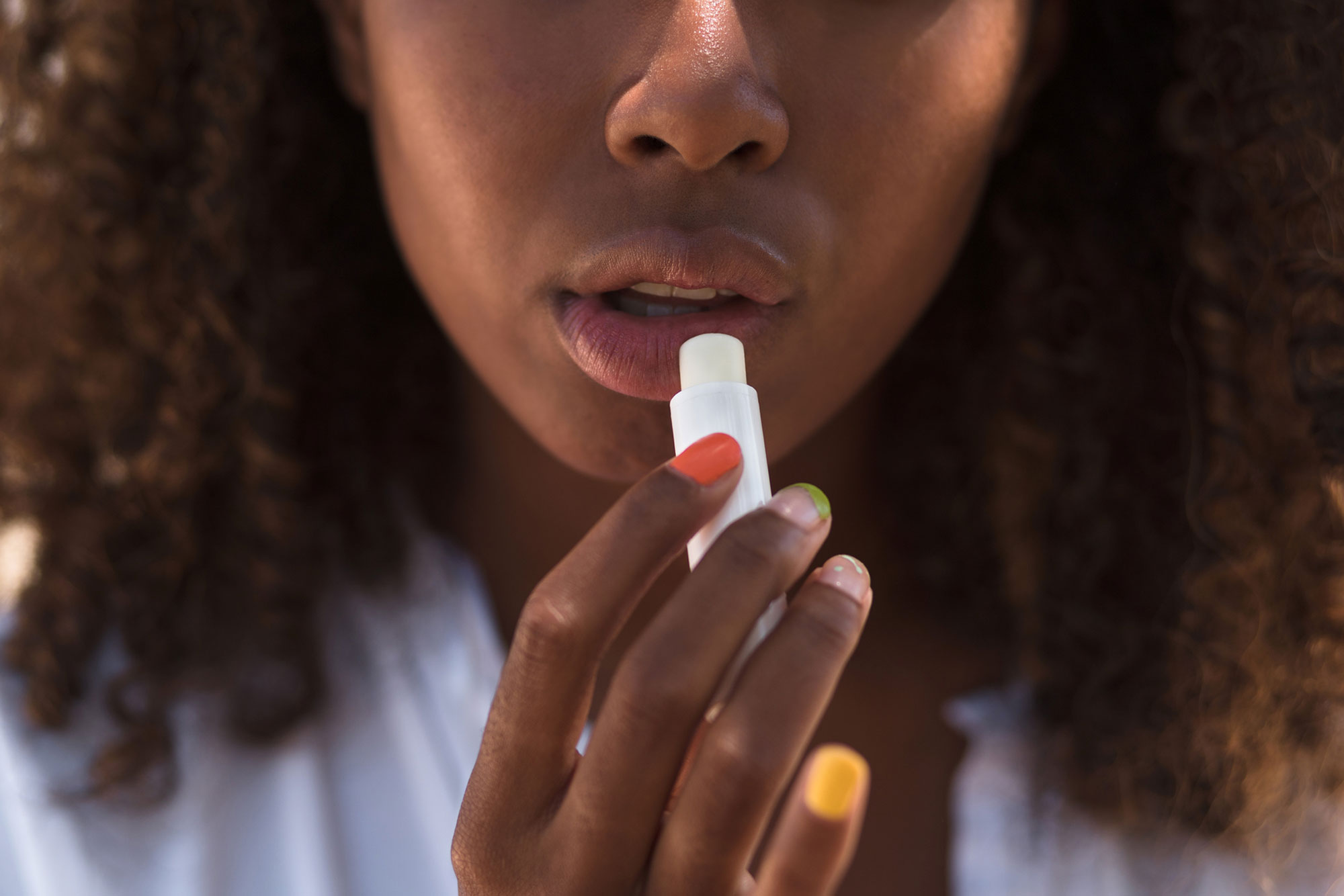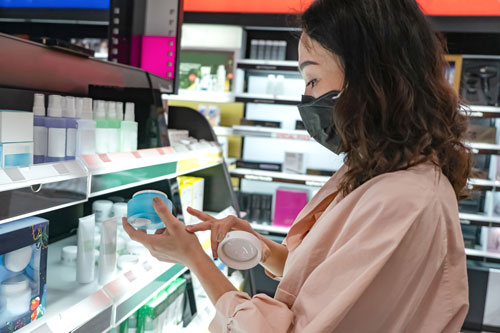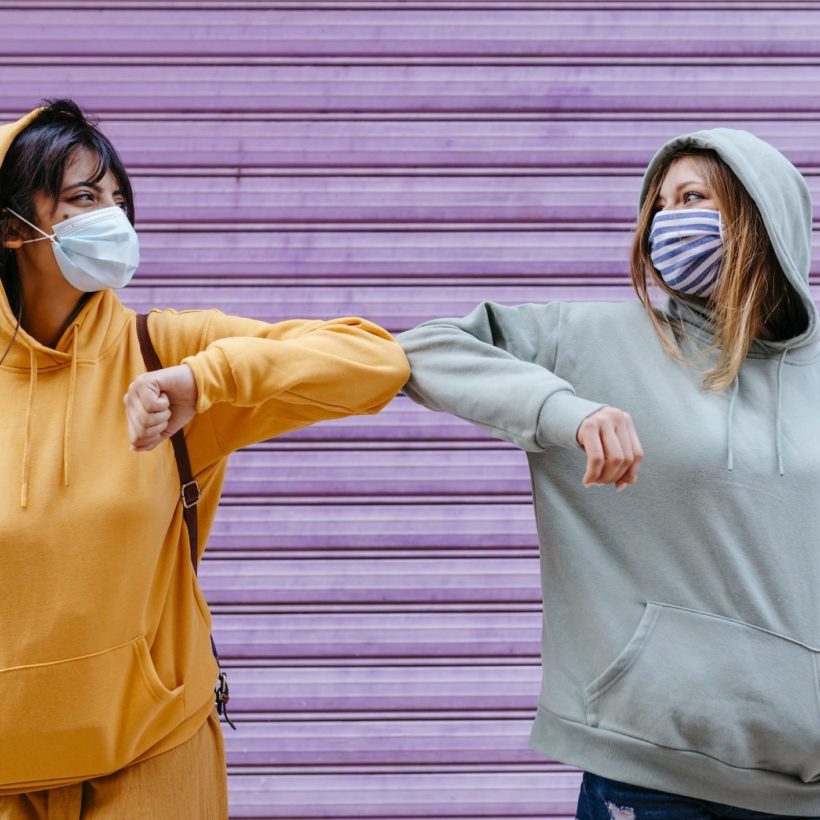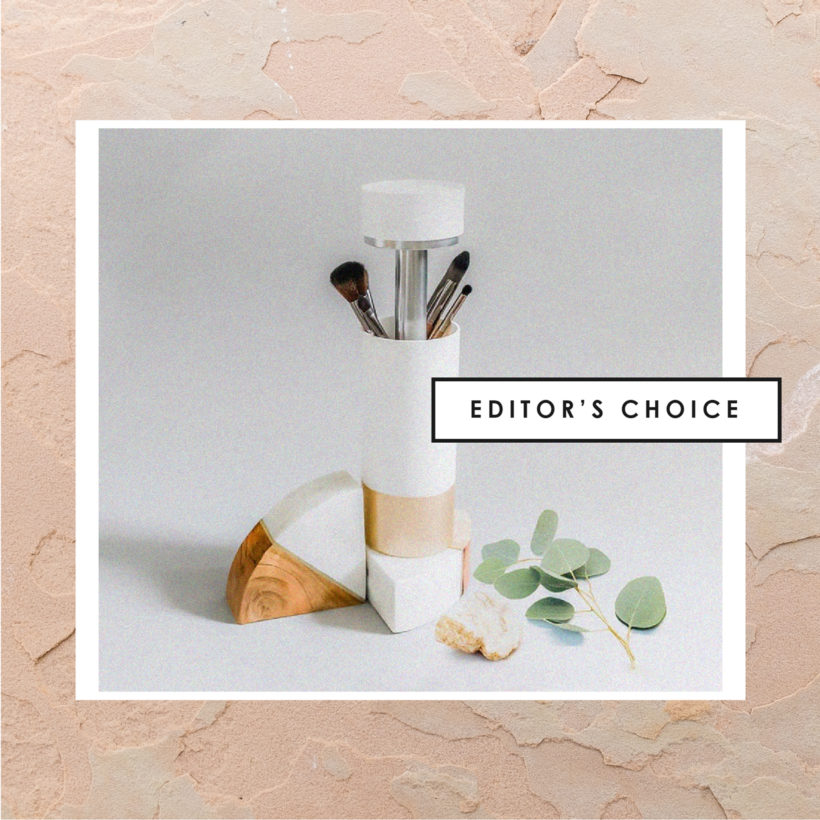Deep into this endemic COVID-19, it seems everyone lucky enough to have escaped previous waves is now testing positive. Since we’re basically on variant 455,542 with no end in sight, if you haven’t already – it’s about time to understand, once and for all, how to stack the health deck in your favor. This includes avoiding infection (or, at this point, re-infection) from the beauty and self-care products we use daily. Here are the seven ways to try to stay safe when it comes to your cosmetics.
Meet the Experts
Dr. Catherine Troisi, Ph.D. is an infectious disease epidemiologist with UTHealth School of Public Health in Houston.
Rule #1: When In Doubt, Don’t Share
According to Dr. Catherine Troisi, Ph.D., you do not need to throw away your toothbrush after COVID-19, as it’s very unlikely that you could re-infect yourself. But infecting other people is another issue, so do not share your toothbrush or makeup. And it’s not just about COVID: Sharing products generally puts you at risk to transmit or catch other fun viruses and bacteria that cause pink eye, styes, and cold sores, says Dr. Troisi.
Contagion risks are highest with products applied near your eyes and mouth since they can more easily enter the body. Products on the high-alert, do-not-share list:
- Chapstick
- Lipstick
- Lip Masks
- Lip Liner
- Eye Liner
- Eye Shadow
- Eye Cream
- Moisturizer
- Lashes
Rule #2: Change the Way You Shop For Makeup
Makeup counter testers, where dozens (hundreds?) of daily shoppers pass their un-sanitized index fingers over the same lip gloss pot before applying to their pucker, are breeding grounds for all kinds of undesirable bacteria. Although it’s technically possible to try a product without risking contagion, it’s tricky, and you have to be vigilant and probably a little pushy. The safest bet: Ask the makeup clerk to open a brand-new product for you to sample. And apply using a brand new, one-use-only applicator. That means a new, disposable spoolie for mascara, a disposable lip brush or Q-tip for lipstick, etc. And suppose you haven’t watched the salesperson open a new item for you to use with your disposable applicator. In that case, you need to be positive that they have been vigilant about preventing “double-dipping” back into the sample. If you can’t be 100% certain, walk away and consider shopping virtually at a makeup brand that offers
Rule #3: Clean Your Brushes
Your brushes and other applicators like reusable makeup sponges can also harbor bacteria. Brushes aren’t a huge COVID concern, but they can still nurture nasties that can make you sick or lead to unwanted acne. Dr. Troisi suggests regularly washing these in warm soapy water and letting them air dry to keep contagions at bay. Not only is it hygienic to clean your tools regularly, but it also improves their functionality and extends their life.
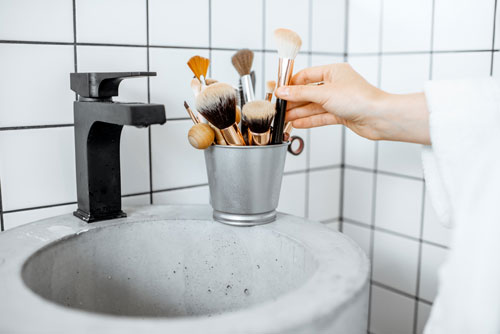
Rule #4: Don’t Assume Your Products are Just Used by You
It’s a good idea to voice your no-share policy – out loud — to all members of your family before there’s something obvious to catch in the house. This is especially true if you have household inhabitants of the teen variety who tend to surreptitiously sample the contents of your makeup bag without permission when you are not around.
Rule #5: Wipe Down Your Products
Though you generally don’t need to throw out your products if you’re recovering from COVID-19, it’s still a good idea to wipe down the outside packaging of all your makeup, hair, and skincare packaging with an antibacterial wipe or alcohol to rid of lingering germs and bacteria. If you want extra efforts in sanitizing your beauty products, try using devices that incorporate ultraviolet light, which can also be useful on tools and electronic devices (like your hairdryer) that you don’t want to risk getting wet.
Rule #6: Give Your Cosmetics a Break
It has yet to be determined just how long the virus is active on surfaces, but some research shows that depending on the material, it could live over a week on products. So to err on the side of caution, put your contaminated beauty products in their own space — like a plastic bin with a lid — and let them go untouched for several days just in case the products are potentially hosting some bacteria.
Rule #7: Don’t Rely on Vaccines to Prevent Infection
“If you are up to date on your COVID-19 vaccinations, you have good protection against severe disease (hospitalization and death) but unfortunately not against infection with the most common strains circulating right now, omicron BA.4 and BA.5,” says Dr. Troisi. “While I would certainly recommend everyone get vaccinated, the precautions don’t differ depending on vaccination status – only the potential outcomes of infection.”
Remember, even without sicknesses, your cosmetics products have a shelf life, and it’s a good rule of thumb to periodically go through your products to investigate their Period After Opening (PAO) mark to see if it’s time to toss. For other signs on how to tell if your products are expired or when to throw out your makeup, hair, and skincare products, check out this handy guide.
We only recommend products we have independently researched, tested, and loved. If you purchase a product found through our links, Sunday Edit may earn an affiliate commission.
